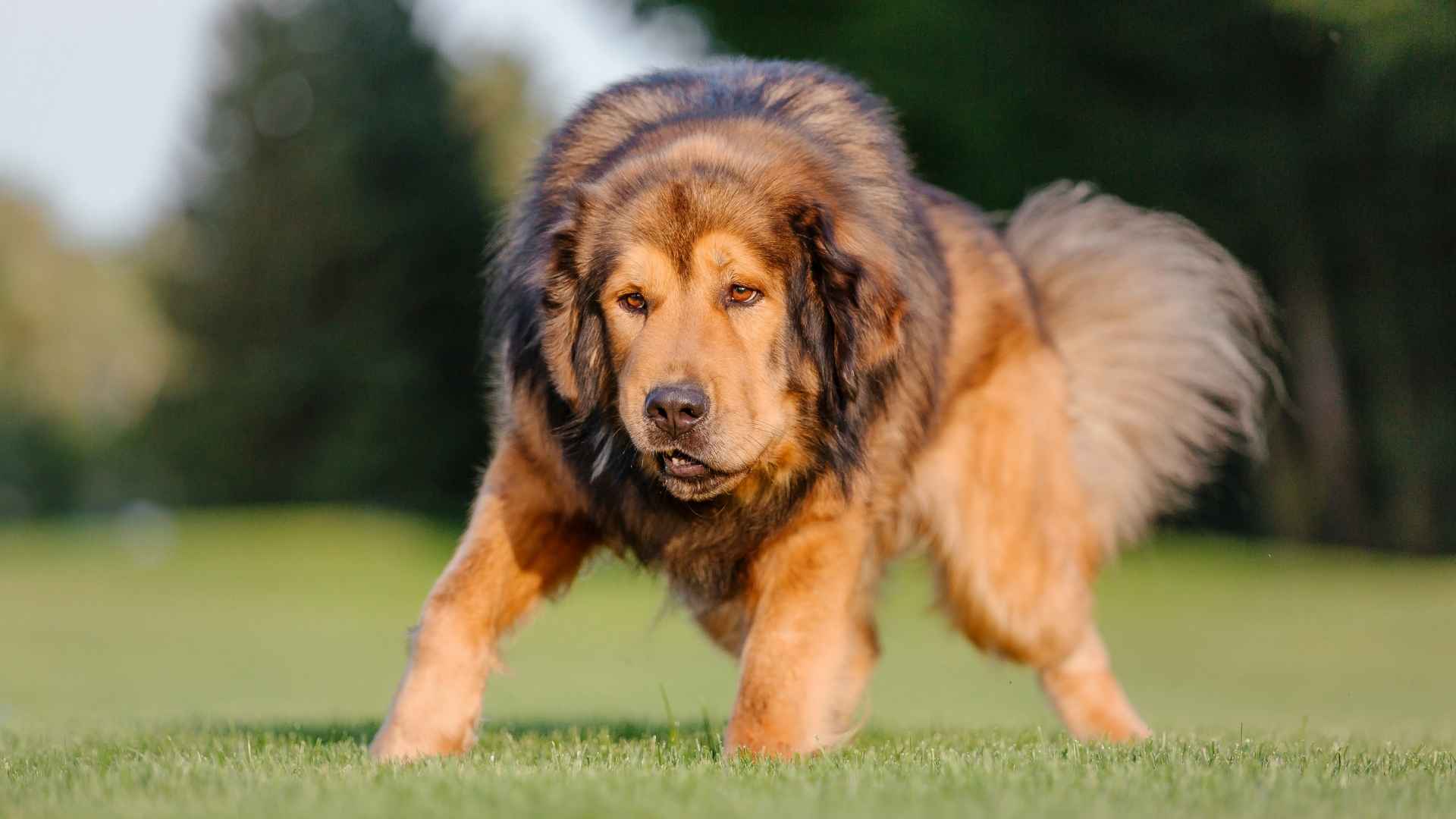You know that moment when a sweet dog runs up to greet you, and you’re instantly baptized by a cascade of drool? If so, you’ve likely met one of the canine world’s top-tier slobber champions. While all dogs drool occasionally, certain breeds turn it into an art form.
In fact, a Saint Bernard can produce over a pint of saliva a day—enough to rival a spilled drink! But here’s the twist: their excessive salivation isn’t just about messy mouths. It’s rooted in biology—those oversized jowls and loose lips simply can’t hold it all in.
Still, for many dog lovers, a little (or a lot) of slobber is a small price to pay for the love, loyalty, and goofy grins these breeds bring. Big hearts often come with big heads—and, apparently, big drool glands. If you’ve got room in your home (and on your furniture) for a larger-than-life companion, these large dog breeds might be right up your alley.
So grab a towel and get ready—we’re diving into the delightfully drooly world of excessive salivation dog breeds.
Excessive Salivation Dog Breeds
1. Saint Bernard
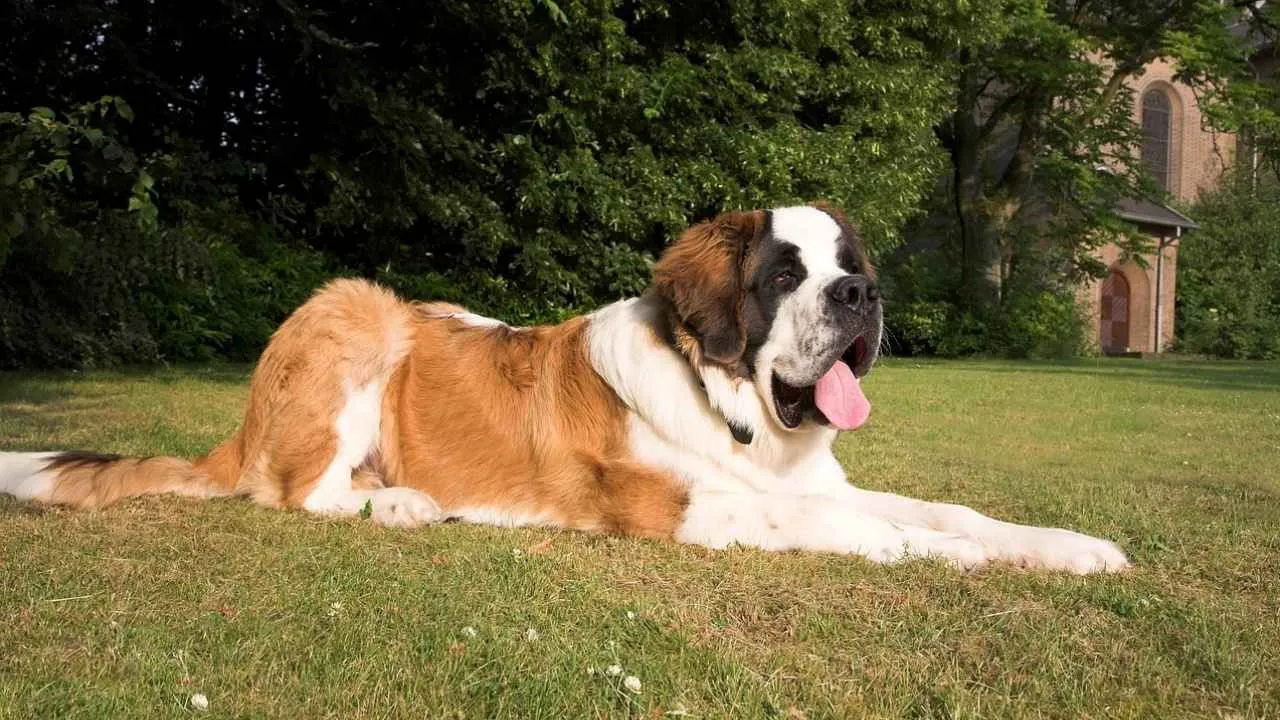
Saint Bernards are gentle giants hailing from the snowy Swiss Alps—originally bred to rescue lost travelers in freezing conditions. Known for their loving temperament, they are loyal companions that adore family life, especially with kids. But their iconic jowls also make them one of the most excessive salivation dog breeds out there.
These dogs drool excessively due to their facial gesture—blabbermouth and heavy flews let saliva escape freely. Expect wet spots on the floor after meals or water breaks! According to Britannica, in warmer climates, Saint Bernards may drool more than others as they attempt to regulate body temperature, which makes cooler environments ideal for their comfort.

Since drooling in dogs can sometimes mask health concerns, it’s important to watch for other signs like vomiting, trouble eating, or loss of hunger. While drooling is normal for this breed, sudden changes could signal a core problem like dental disease or an upset stomach.
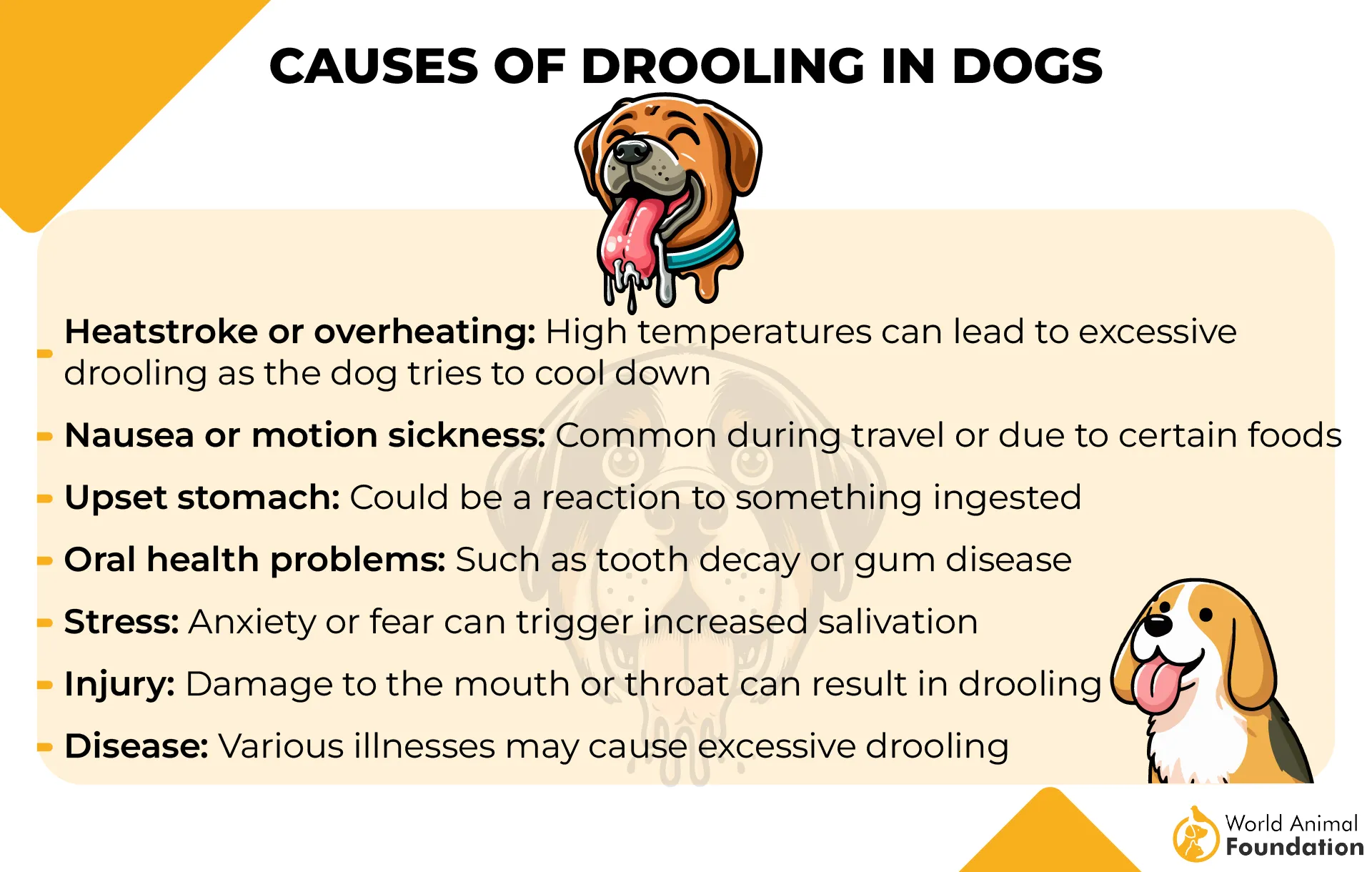
Owners should also pay attention to the dog’s eating behavior and hygiene—leftover food can get trapped in their mouth, potentially irritating the salivary glands. Regular cleaning and checkups help keep their signature spit manageable.
2. Dogue de Bordeaux

The Dogue de Bordeaux, also known as the French Mastiff, is a powerful yet calm dog breed that balances strength with a surprisingly sweet dog character. Their oversized head and signature wrinkles make them lovable, but also prime candidates for excessive drooling, especially after meals or a good drink.
As a brachycephalic breed, their short muzzle and loose jowls trap moisture, letting saliva pool and drip with ease. It’s no surprise they’re on the list of top drooling dogs, and owners quickly learn to keep towels nearby. The folds on their face can also retain food and water, creating perfect conditions for irritation or bacterial buildup.
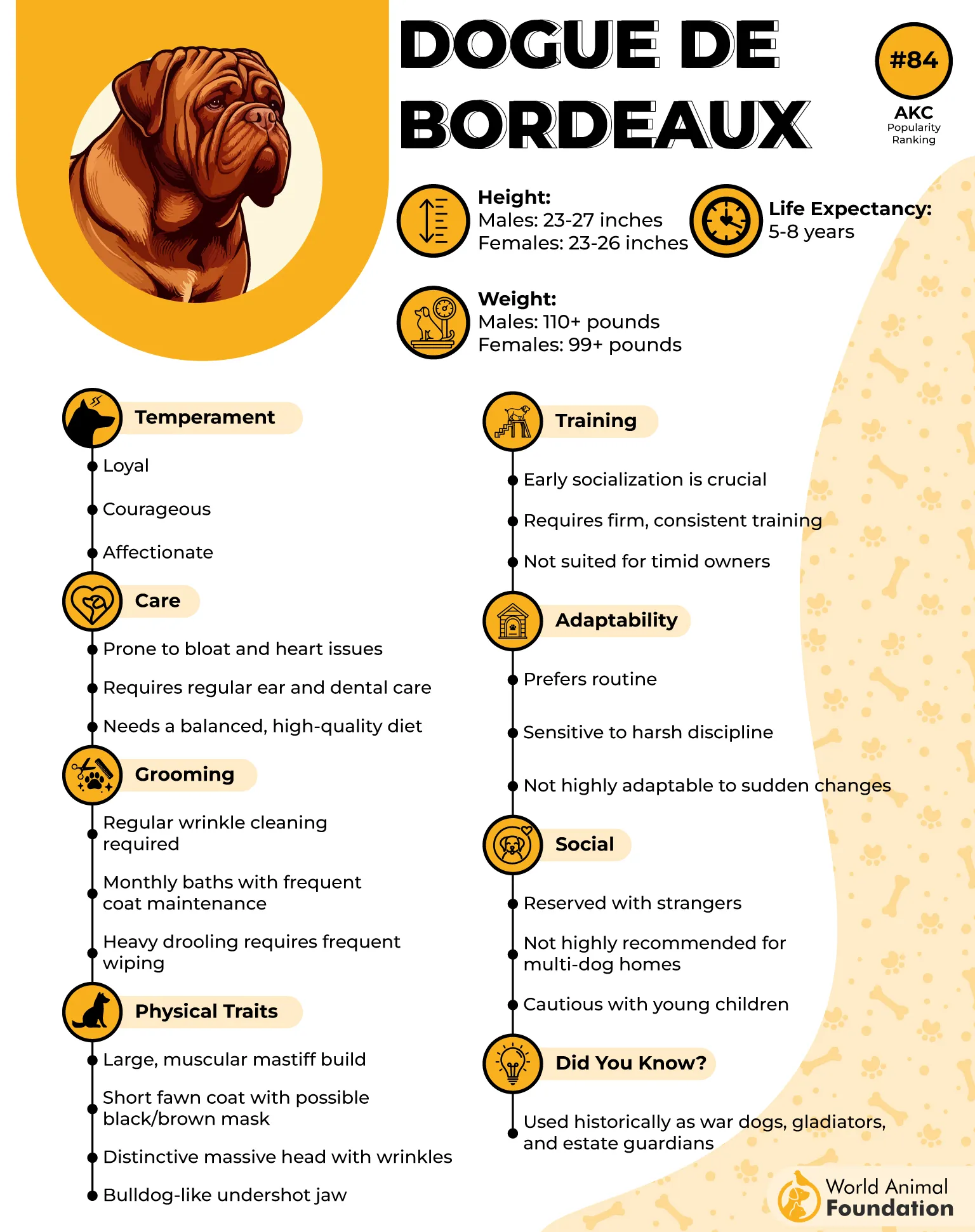
While their facial gesture contributes to regular slobber, excessive wetness may hint at an underlying cause like mouth injury, lodged object, or even gingivitis. That’s why monitoring their gums and general health is essential for keeping their drooling in check.
These heavy droolers also have a tendency to overheat in warm climates, which can make drooling in dogs even more intense. Keeping them cool and hydrated is crucial—not just for comfort but for avoiding abdominal pain or heat-related issues.
3. Bloodhound
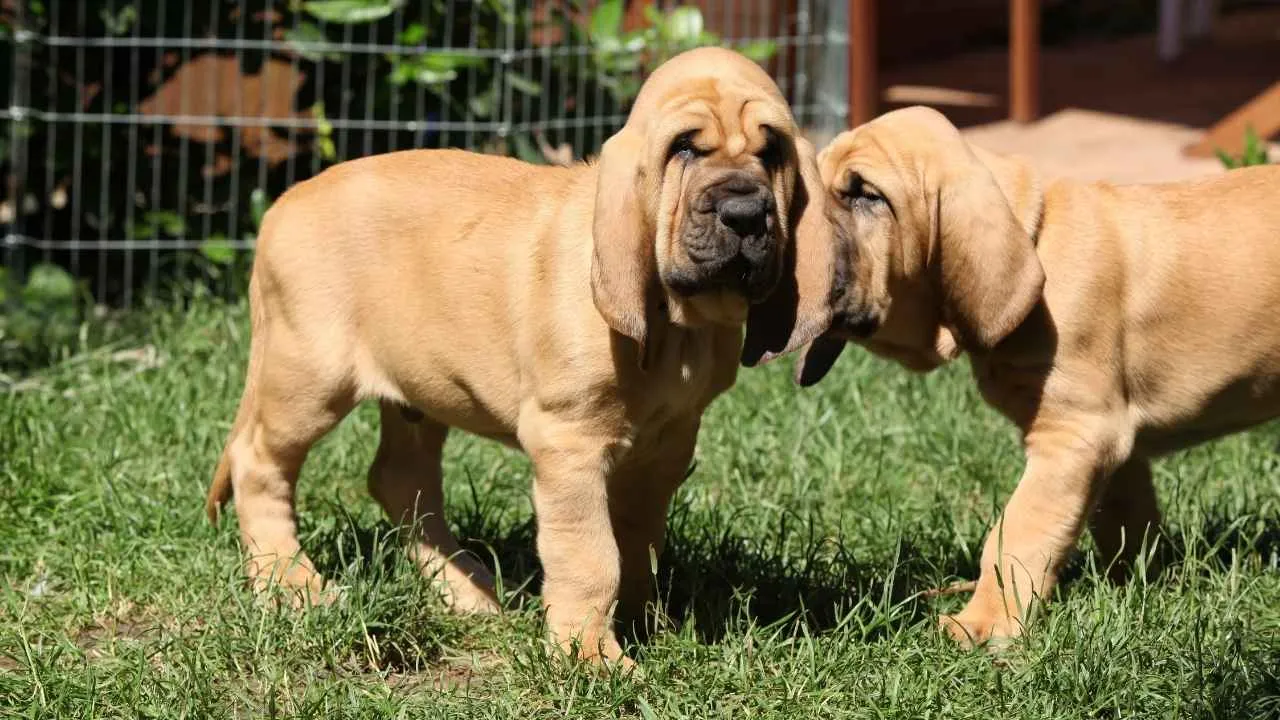
Bloodhounds are legendary for their tracking skills, but their drooping skin and deep-set jowls also make them champions of slobber, as per Hillspet. With blabbermouth and extra folds around the mouth, they’re among the heavy drooling dog breeds, and they don’t mind leaving a trail behind.
These dogs drool frequently, especially when they’re eating, drinking, or just excited about a scent. Their roomy cheek pockets can hold surprising amounts of saliva, which often ends up flung across the room with a single shake of the head.
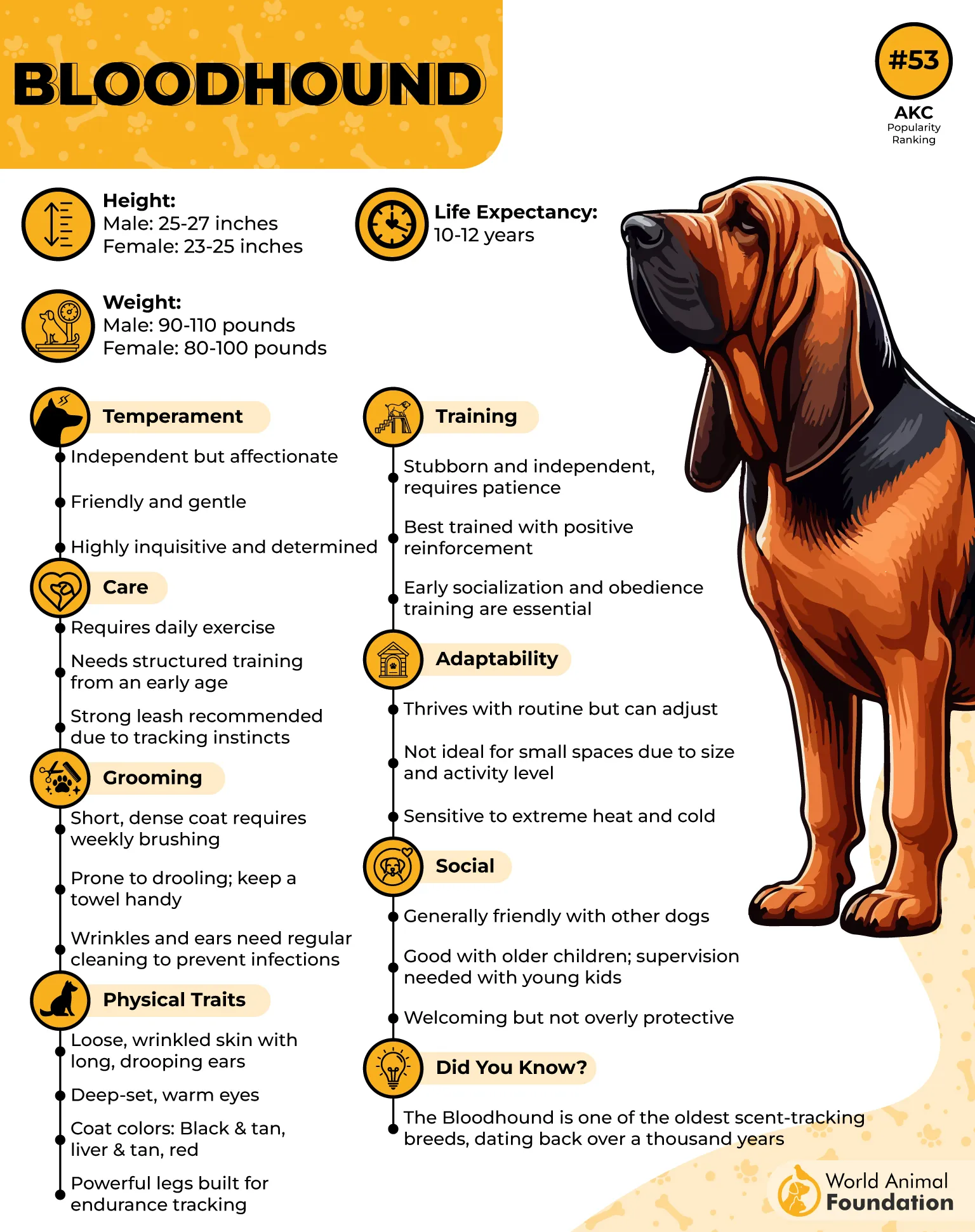
Because of their saggy skin, trapped moisture can be an issue. Owners should check for other symptoms like irritation, debris buildup, or signs of periodontal disease hiding in those folds. Staying on top of oral care helps prevent dental problems and keeps excessive drool from becoming a bigger issue.
While their eating habits may seem normal, sudden changes in slobber patterns can indicate an underlying problem like gastrointestinal disorders or trouble eating, both requiring a vet’s attention.
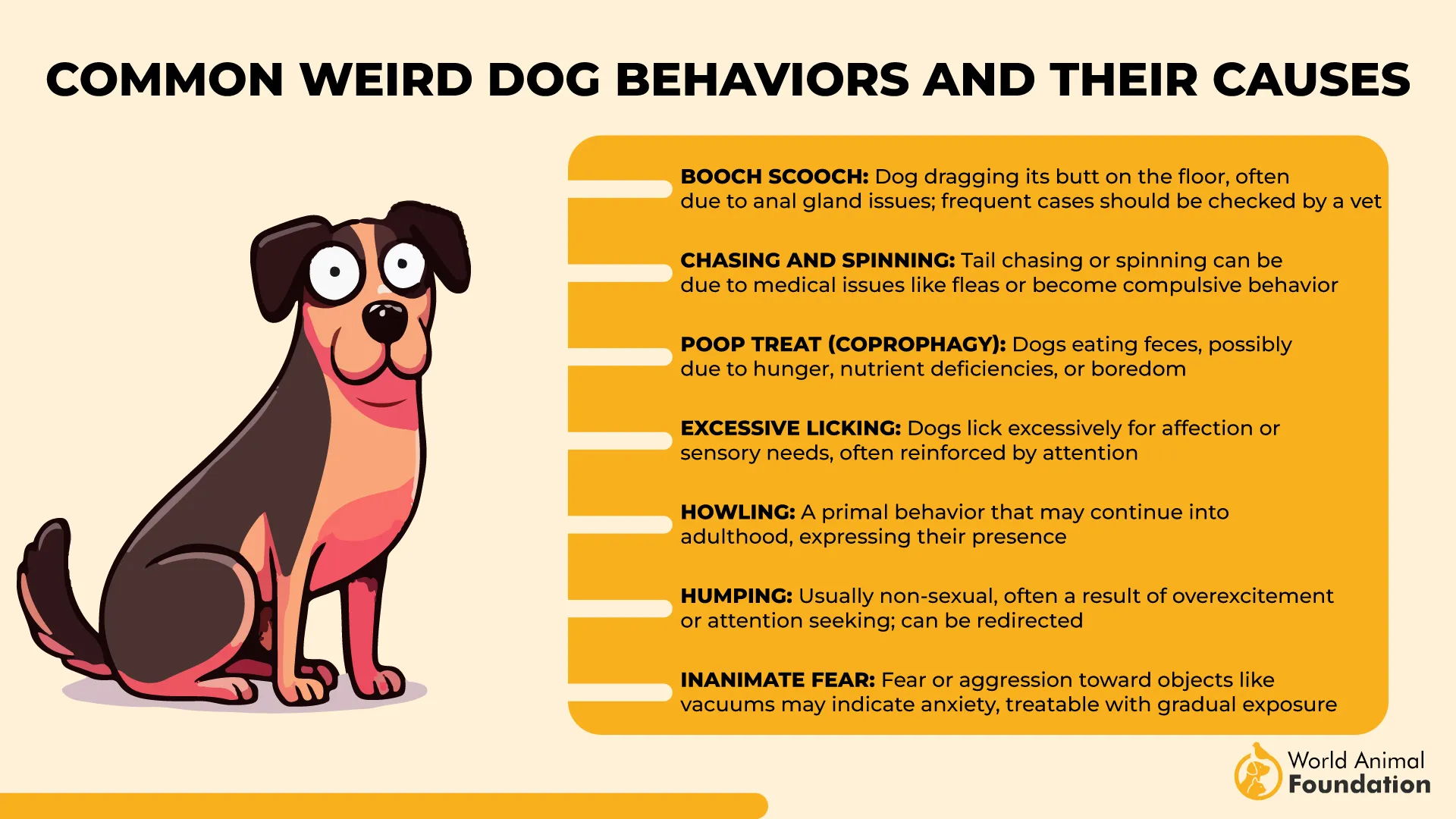
Even with all that mess, Bloodhounds remain loyal, gentle, and full of charm. Just be ready for the clean-up crew duty that comes with owning one.
4. Newfoundland

The Newfoundland is a gentle giant with a heart as massive as its frame—and a drool game to match. Known for their calm demeanor and love of water, according to the American Kennel Club (AKC), these giant dog breeds also rank high among the excessive salivation dog breeds, thanks to their wide jowls and relaxed lips.
Whether it’s post-swim shakes or meal anticipation, these slobbering dogs leave behind wet marks that are part of the package. Their shaggy skin doesn’t help either—it traps moisture and leftover food, which can irritate the mouth if not cleaned regularly.
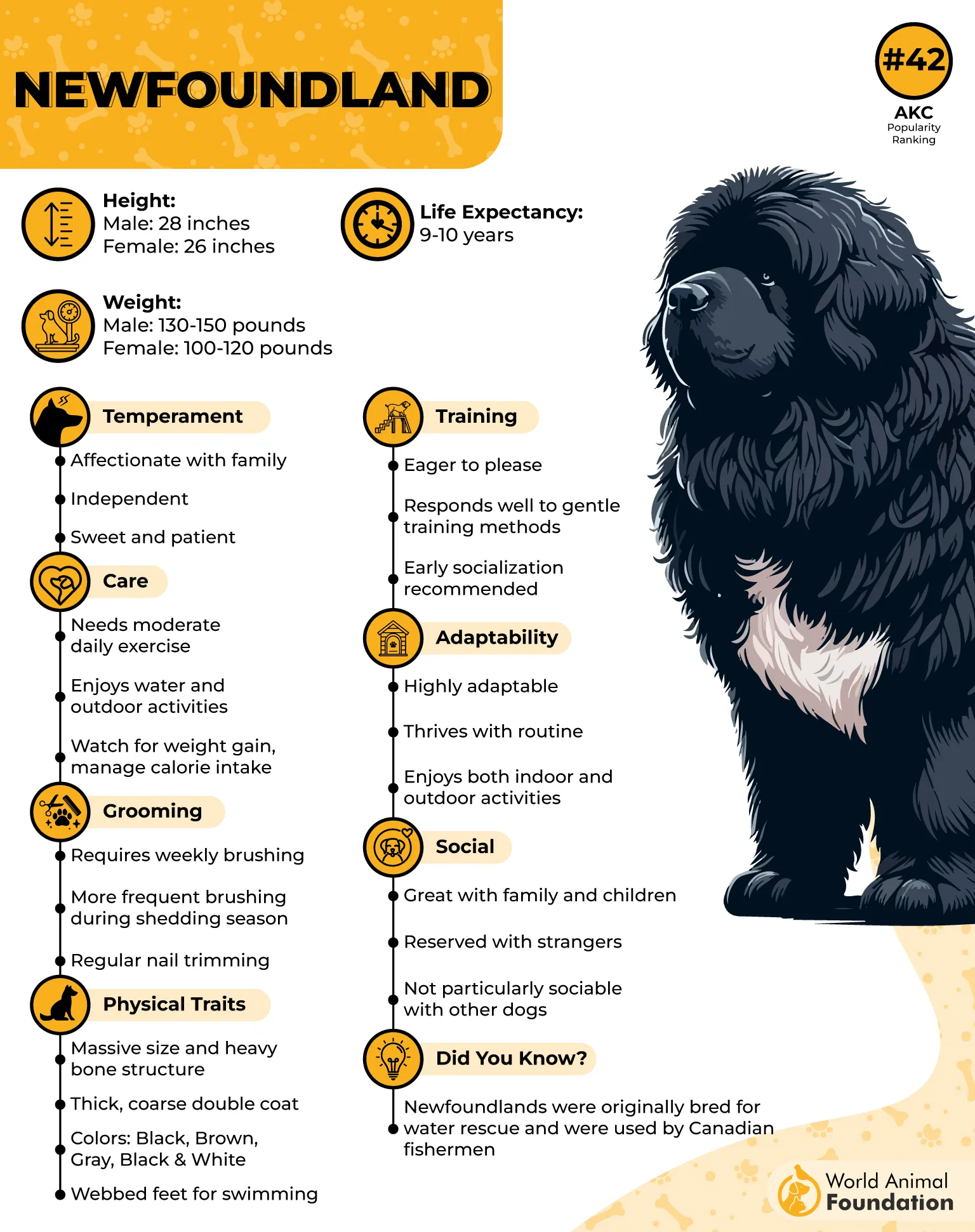
While their slobber is usually harmless, be alert for other signs like vomiting, bad breath, or difficulty swallowing, which may point to dental problems or an upset stomach. Regular brushing and vet visits help catch issues like periodontal disease before they escalate.
They’re also known for being sweet with children, but their salivary glands don’t hold back, especially after a long drink or active playtime. A towel becomes a must-have accessory for any Newfoundland owner. Still, for all their slobber, these dogs give back tenfold in endless love, loyalty, and companionship.
5. Neapolitan Mastiff
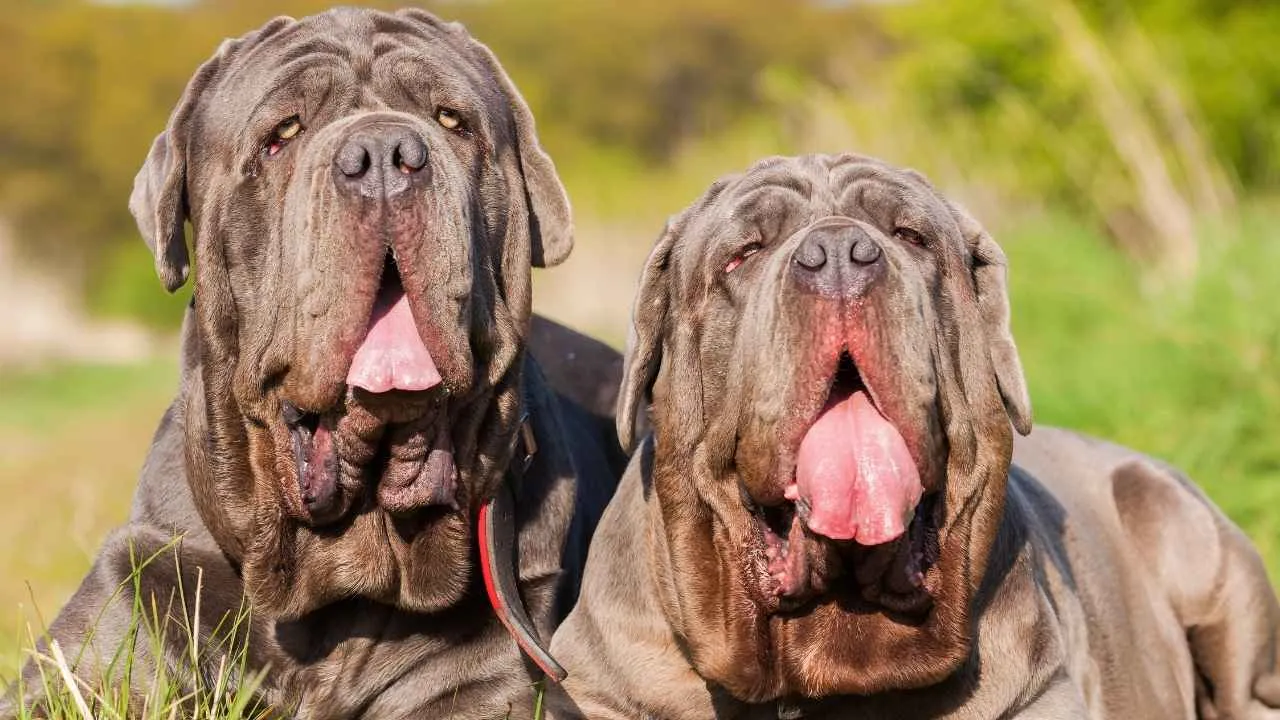
The Neapolitan Mastiff may look like a walking pile of wrinkles, but beneath all that skin is a fiercely loyal, slobber-filled sweetheart. With deeply droopy jowls and shaggy skin, they’re among the most iconic excessive salivation dog breeds—and they make no apologies for the mess.
These dogs drool constantly due to their facial anatomy, especially after eating, drinking, or during warm weather. Their facial structure allows saliva to build up and spill out, turning every water break into a mini splash zone.
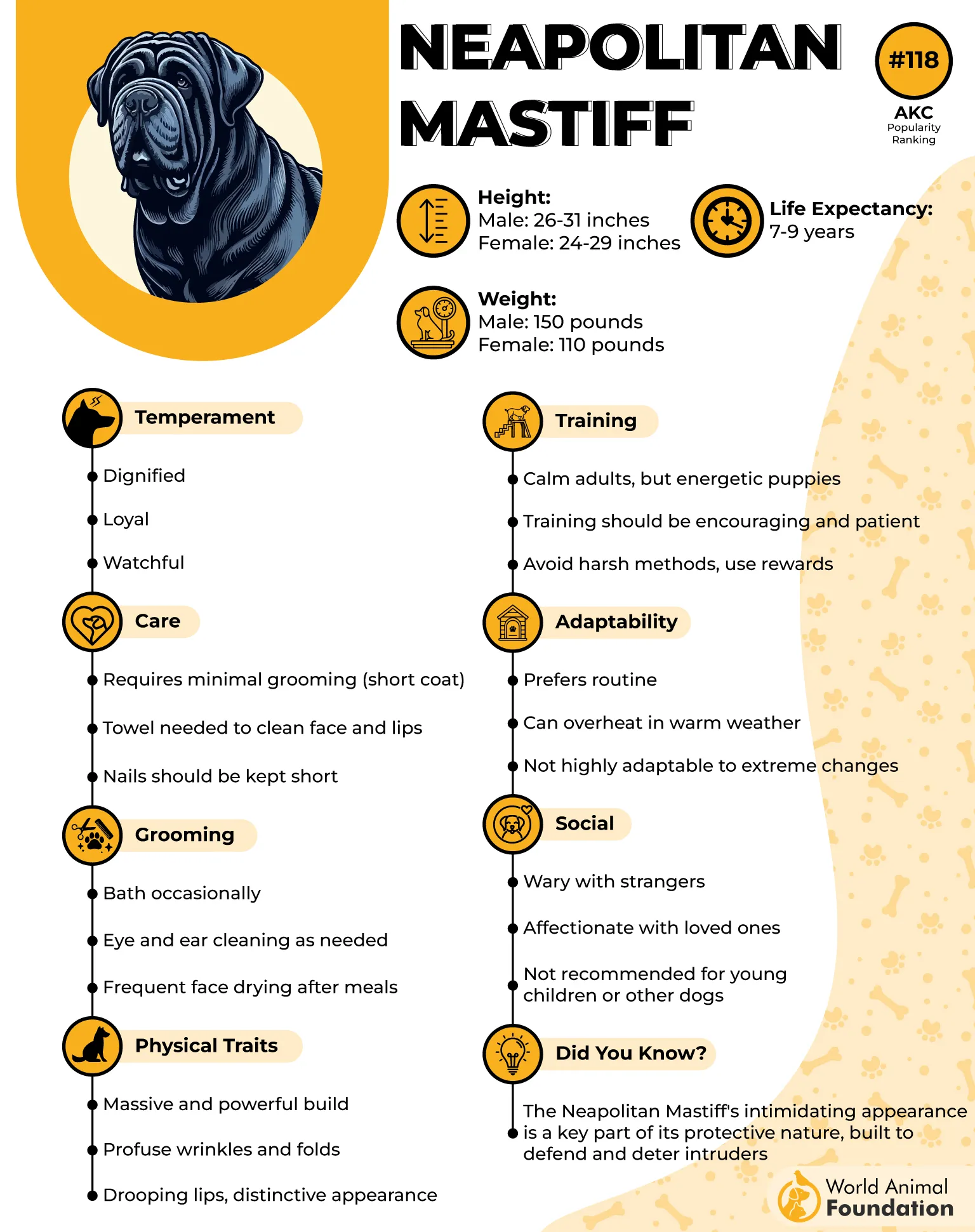
While some slobber is expected, be aware of other symptoms like pawing, changes in appetite, or drooling more than usual, which can point to dental disease, mouth injury, or even exposure to toxins.
Like many giant breeds, they’re prone to stomach pain and gastrointestinal disorders, which can also trigger increased drooling. Regular checkups and a watchful eye can help you spot potential health issues early.
Despite their dramatic looks and serious slobber, Neapolitan Mastiffs are gentle protectors who offer unwavering loyalty—just keep your floors mop-ready and your heart open.
6. Bulldog

Bulldogs may be small in size compared to other dogs, but when it comes to slobber, they punch well above their weight. Their short snouts and heavy jowls make them classic drooling pups, with saliva that tends to drip freely, especially after eating or drinking.
As a brachycephalic breed, Bulldogs often struggle with breathing and difficulty swallowing, which can amplify their drool output. Add in their eating behavior, and you’ve got a pup that slobbers for snacks, stress, or just because.
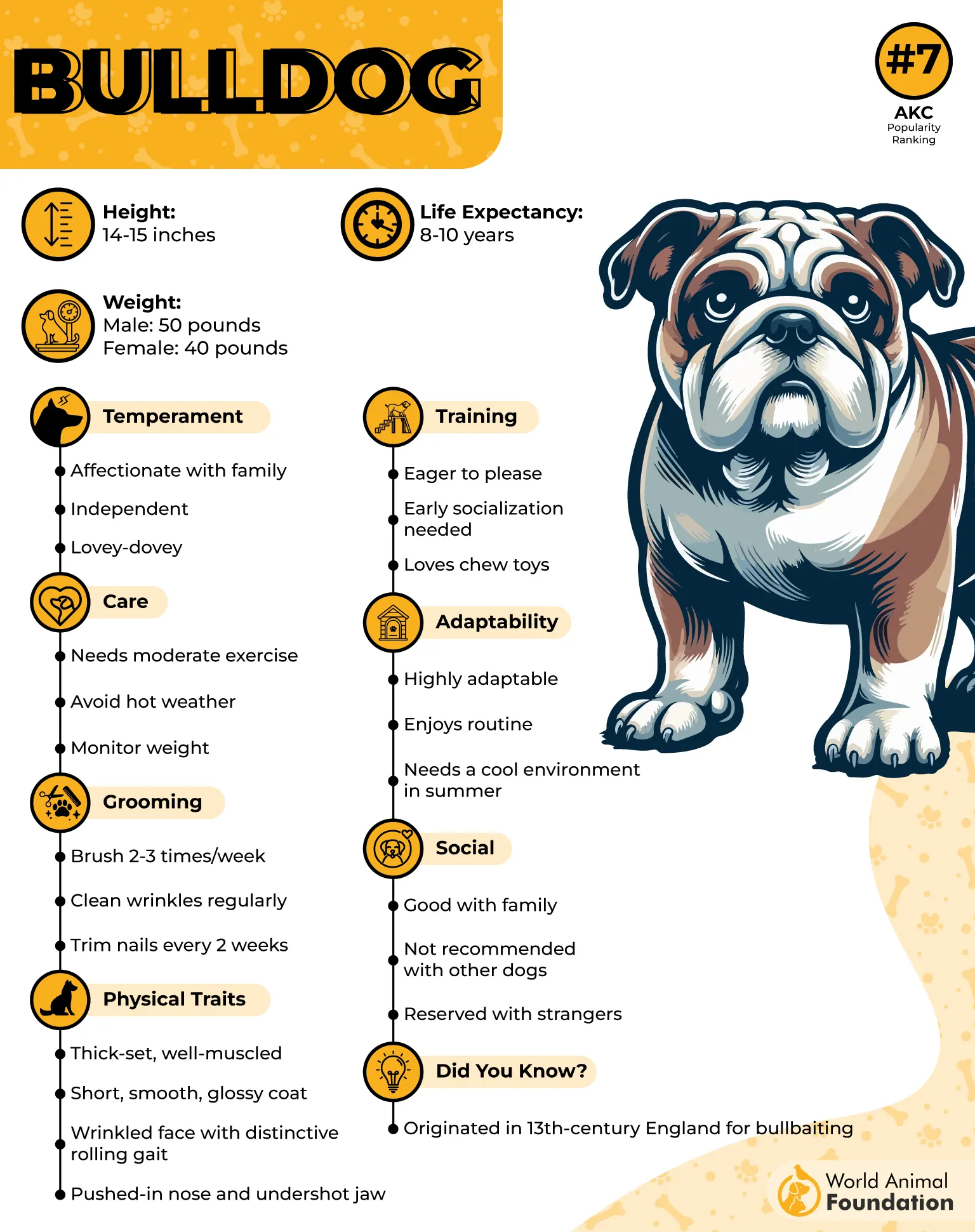
While most of their mess is part of the breed’s charm, sudden excessive drooling in dogs like Bulldogs could signal issues like gingivitis, foreign body ingestion, or even abdominal pain. Their facial folds also need regular cleaning to prevent irritation or infection.
Because they’re prone to overheating, Bulldogs may drool more than others in hot climates. Owners should watch for other signs like panting or restlessness that could point to heat stress or an underlying cause worth checking with a veterinarian.
7. Bullmastiff
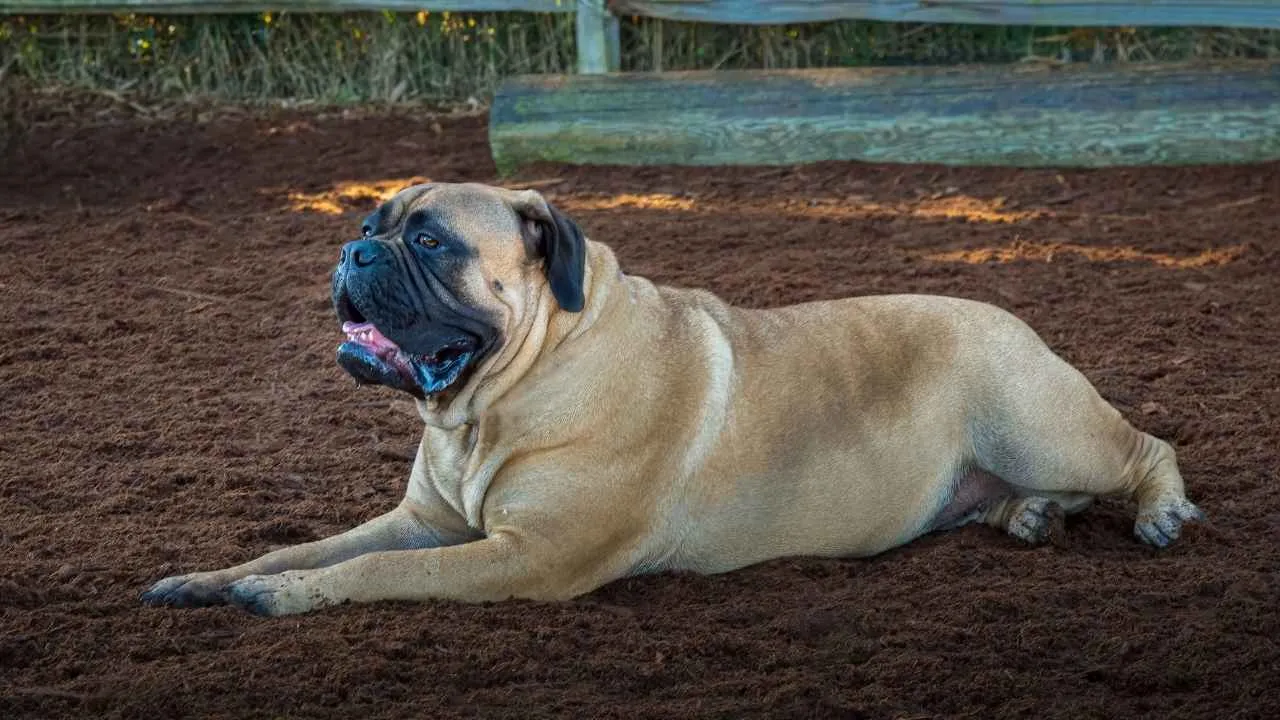
The Bullmastiff is a powerful protector with a gentle heart and a natural-born heavy drooler. Their deeply folded faces and shaggy skin are perfect reservoirs for saliva, landing them squarely among the top excessive salivation dog breeds.
These breeds drool most after meals, exercise, or a refreshing gulp of water. Their skin folds don’t just trap moisture—they also hold food debris, making hygiene a top priority to prevent mouth irritation or infection.

Though regular slobber is typical, any increase in drooling, especially if paired with spewing, loss of appetite, or difficulty swallowing, may indicate an issue like dental disease or a foreign object. Regular vet visits and proper oral care go a long way in keeping things under control
Because of their sheer size, drool can travel far, often landing on furniture, walls, or unsuspecting visitors. But in return, Bullmastiffs offer unconditional love and quiet strength, making the occasional mess well worth the mop.
To minimize mess and discomfort, owners should also pay close attention to their gums and regularly inspect for signs of infection or inflammation. Staying proactive helps keep this breed’s signature slobbering from turning into a serious health concern.
Conclusion
Let’s face it—drool happens. And for the breeds we’ve covered, it’s not just an occasional drip; it’s practically a personality trait. From the jowly Saint Bernard to the ever-serious Neapolitan Mastiff, each of these lovable giants brings a whole lot of heart… and a little extra slobber. But as we’ve seen, that moisture comes with some serious charm.
Whether it’s the gentle loyalty of a Bullmastiff, the soulful gaze of a Bloodhound, or the goofy grin of a Bulldog mid-slobber, these drooling breeds offer something no amount of drool towels can buy—endless love and unforgettable companionship. Sure, your furniture might take a hit, but your heart? That’s where these pups really leave their mark.
It’s important to understand the why behind the drool—whether it’s tied to facial structure, salivary glands, or a sign of something deeper like dental issues. Staying informed means staying one step ahead of the mess.
So if you’re considering one of these breeds, don’t let the slobber scare you. With a little extra care (and a good mop), they just might be the perfect fit.
And hey, love is messy sometimes. But isn’t that what makes it so great?


